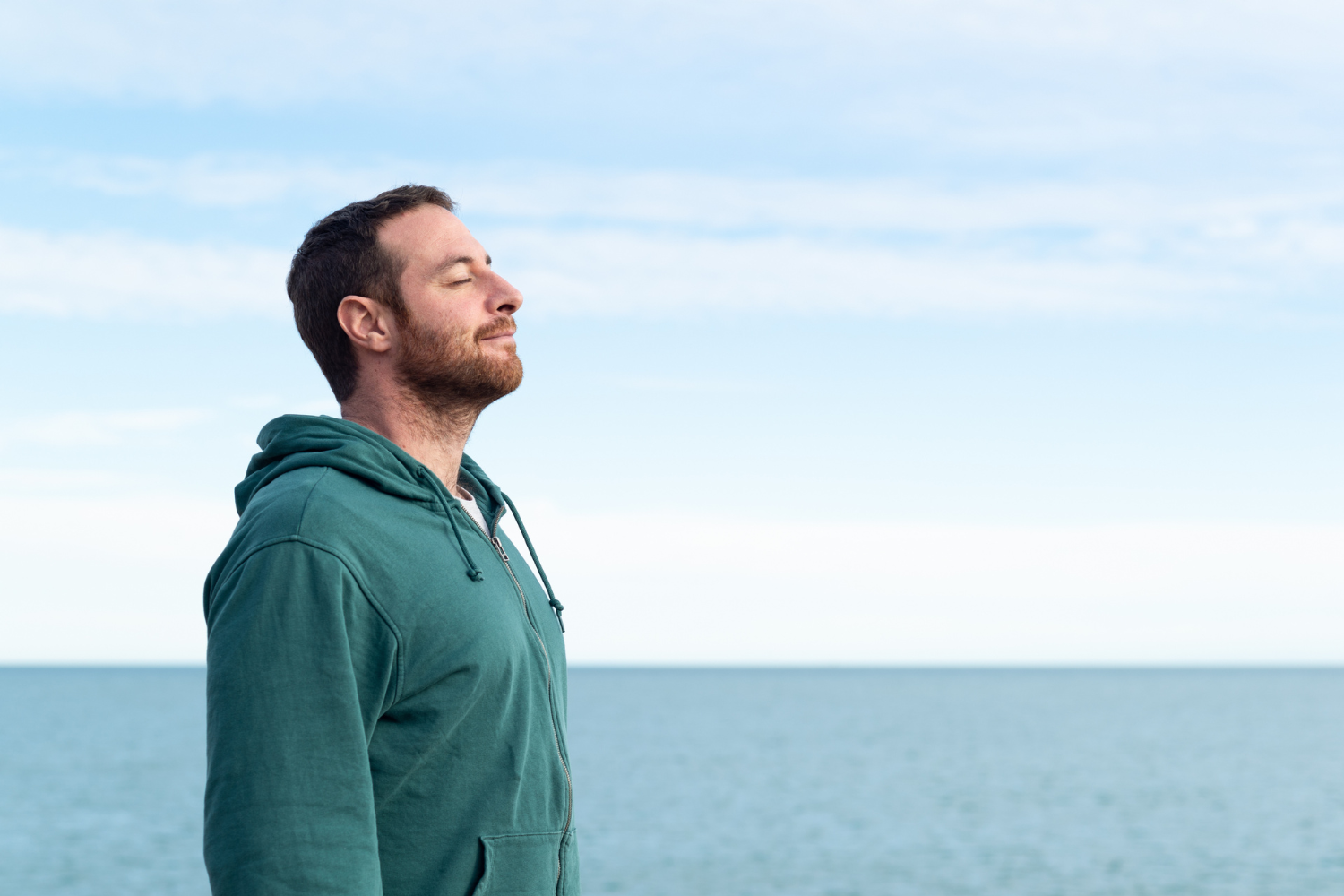An Introduction to the Tenets of Osteopathic Medicine
The fourth tenet of Osteopathic Medicine is grounded in the concept that rational treatment should be approached by three major characteristics: body unity, self-regulation, and the dynamic relationship between structure and function. These three characteristics encompass the remaining osteopathic medical tenets and aid in understanding the fourth and final tenet. Notably, this principle's holistic approach to treatment may play a key role in improving the well-being and activity of the older adult population.
One must understand the other three to grasp the fourth tenet of osteopathic medicine truly. By understanding the other three tenets, one can begin to see why osteopathic manipulation treatments (OMT) may be able to provide the older adult population with improved well-being. The first osteopathic tenet, "The body is a unit; the person is a unit of body, mind, and spirit," focuses on the body as a whole (1). It teaches medical students that the body requires both physical and spiritual analysis. According to Western University, this tenet reveals how each part of the body relies on one another. For instance, if one's renal function begins to deteriorate, it also impacts other systems, such as the cardiovascular system. An example of the impact of spiritual/mental health on bodily function is how stress plays a crucial role in both positive and negative effects on the human body (3).
The next tenet states, "The body is capable of self-regulation, self-healing, and health maintenance" (1). This is the idea that the body can maintain its health. In order to maintain its own health and have the ability to self-heal, the body must be in proper function. Osteopathic physicians must understand this idea as they guide the body back to proper health and function to maintain these properties.
The third tenet focuses on structure and function: "Structure and function are reciprocally interrelated" (1). Understanding this tenet of osteopathic medicine means that the musculoskeletal system can impact other body parts and structures (2). Thus, understanding how to maintain structure properly may improve the overall function of those with decreased health.
Overall, the four osteopathic tenets provide insight into better treating and relieving the body of illness and other stressors. For the older adult population, this could provide valuable insight into improving preventative medicine for this demographic in particular. Specifically, the utilization of osteopathic manipulation treatments (OMT) may aid in decreasing older adults' sedentary lifestyles, reducing fall risks, and managing chronic pain.
Addressing Older Adult Sedentary Lifestyle, Fall Risk, and Chronic Pain as Factors of Overall Well-Being
For many older adults, staying active and moving becomes a challenge. This sedentary lifestyle, defined by one study as being sedentary for at least 8.5 hours a day, possibly impacts at least 60% of older adults (those over 60) (4). Sedentary lifestyles also had a positive correlation with decreased aspects of quality of life, including mobility, self-care, usual activities, pain/discomfort, and anxiety/depression (5). For many older adults experiencing sedentary lifestyles, pain, lack of range of motion, and balance can be addressed by techniques within OMT. By utilizing these techniques, primary care physicians have the potential to improve preventative medicine for older adults in their homes by reducing pain, preventing falls, and improving overall health/well-being. Therefore, primary care physicians and other healthcare professionals can improve the daily activity and range of motion of those within the older adult population through OMT.
A sedentary lifestyle may have negative health impacts on those experiencing it. Specifically, the older adult population who experience this type of lifestyle is more likely to face mortality. One study showed that those who were sedentary for more than 8 hours per day were at a higher risk of mortality than those who were less sedentary (6). The important role that primary care physicians play in influencing both physical and dietary changes for older adults is highlighted by research that focuses on the topic (7). In particular, primary care physicians generally have a strong bond with their patients, and thus, the advice and guidance provided to their patients allow them to implement healthy changes. Thus, gaining a better understanding of how the body is altered in the older adult population provides physicians with further insight into which OMT techniques and tenets apply best to encourage additional activity and movement.
Sedentary lifestyles are not the only negative factor that impacts older adults. According to the Centers for Disease Control, over 9 million Americans over 65 experience a fall annually that results in a need for medical treatment (8). The World Health Organization states that falls are the second leading cause of unintentional injury death in the world, with adults over the age of 60 experiencing the most fatal falls (9). It has been found that PCPs discussing fall risk with their older patients allow for improved health outcomes overall. Primary care physicians can discuss techniques that decrease fall risk, such as general exercise, Tai Chi, physical therapy referrals, and more (10). Another study has displayed how the utilization of OMT can improve older adults' balance and postural stability (11). Research such as this can help to show how utilizing OMT techniques as a PCP can be used to manage and reduce the risk of falls within the older adult population, similar to the other methods mentioned previously.
Finally, chronic pain is an issue many older adults experience. One research study discusses how chronic pain comes in the form of chronic unspecified joint pain (40%), back pain (5-45%), and neck pain (20%). Neuropathic pain is also another form of chronic pain and the percentage of older adults experiencing this kind of pain is reportedly 10-52% (12). Overall, chronic pain is a prevalent issue for many older adults, and OMT offers an additional technique primary care providers may use to aid in the management of this health issue.
Understanding osteopathic medicine techniques allows primary care providers to understand better the various methods offered through osteopathic manipulation treatment. For instance, techniques such as counterstrain focus on the body and its various tender points. One study found that symptoms of complex regional pain syndrome could be relieved by using counterstrain techniques (13). Utilizing these points may be helpful for some older adults in managing their chronic pain if they fall around these areas. These OMT techniques can provide alternative routes of treatment for common issues that the older adult population experiences, such as a sedentary lifestyle, falls, and chronic pain.
Utilizing OMT as a Means to Improving Sedentary Lifestyle, Fall Risk, and Chronic Pain Management
A sedentary lifestyle, fall risk, and chronic pain are all risk factors that the usage of OMT may manage. Primary care physicians may utilize different OMT techniques to manage these factors. For starters, an OMT technique that may be considered is muscle energy to encourage range of motion and activity. Research shows that muscle energy has been used previously to address cervical pain and range of motion, where the technique improved both factors (14). OMT techniques such as muscle energy offer primary care physicians a treatment that will allow them to address both the pain and range of motion restrictions that some of their older adult patients may be experiencing. By providing them with a treatment that improves these two factors, patients could be more likely to engage in less sedentary lifestyles.
Balance is a critical factor influencing fall risk in the older adult population. One study found that balance and vestibulocochlear function could be managed with OMT techniques. As such, one study found that patients who were treated with OMT techniques performed better on the open-eye sway balance test. The OMT techniques performed on these individuals included myofascial release, cranial techniques, counterstrain, muscle energy, venous sinus drainage, and more. The study concluded that this may warrant further research into how OMT usage could help prevent falls in future studies (11).
Conclusion
Osteopathic Medicine and OMT provide primary care and osteopathic physicians with many possible treatment routes for older adults experiencing a sedentary lifestyle, fall risk, and chronic pain. Techniques such as muscle energy, counterstrain, myofascial release, and more allow physicians to better manage these risk factors for the older adult population. Utilizing such techniques may encourage this demographic to be more actively engaged due to decreased fears of falling or experiencing pain. Many techniques may add little time to the standard visit, and overtime would warrant more support for the usage of OMT. The current research displays how OMT has positively impacted those who have utilized it, and its continued usage will allow for more research and support to be garnered.
References
About osteopathic medicine. AACOM. Accessed December 27, 2023. https://www.aacom.org/become-a-doctor/about-osteopathic-medicine#:~:text=Four%20Tenets%20of%20Osteopathic%20Medicine,and%20function%20are%20reciprocally%20interrelated.
Osteopathic philosophy. Western University of Health Sciences. Accessed December 27, 2023. https://www.westernu.edu/osteopathic/about/osteopathic-philosophy/.
Yaribeygi H, Panahi Y, Sahraei H, Johnston TP, Sahebkar A. The impact of stress on body function: A review. EXCLI J. 2017;16:1057-1072. Published 2017 Jul 21. doi:10.17179/excli2017-480
Harvey JA, Chastin SF, Skelton DA. Prevalence of sedentary behavior in older adults: a systematic review. Int J Environ Res Public Health. 2013;10(12):6645-6661. Published 2013 Dec 2. doi:10.3390/ijerph10126645
Kim Y, Lee E. The association between elderly people’s sedentary behaviors and their health-related quality of life: Focusing on comparing the young-old and the old-old. Health and Quality of Life Outcomes. 2019;17(1). doi:10.1186/s12955-019-1191-0
Rezende LF, Rey-López JP, Matsudo VK, Luiz O do. Sedentary behavior and health outcomes among older adults: A systematic review. BMC Public Health. 2014;14(1). doi:10.1186/1471-2458-14-333
Bardach SH, Schoenberg NE. The Role of Primary Care Providers in Encouraging Older Patients to Change Their Lifestyle Behaviors. Clin Gerontol. 2018;41(4):326-334. doi:10.1080/07317115.2017.1376029
Older adult falls data. Centers for Disease Control and Prevention. September 6, 2023. Accessed December 28, 2023. https://www.cdc.gov/falls/data/index.html.
Falls. World Health Organization. Accessed December 28, 2023. https://www.who.int/news-room/fact-sheets/detail/falls.
Burns ER, Haddad YK, Parker EM. Primary care providers' discussion of fall prevention approaches with their older adult patients-DocStyles, 2014. Prev Med Rep. 2018;9:149-152. Published 2018 Jan 31. doi:10.1016/j.pmedr.2018.01.016
Lopez D, King HH, Knebl JA, Kosmopoulos V, Collins D, Patterson RM. Effects of comprehensive osteopathic manipulative treatment on balance in elderly patients: a pilot study. J Am Osteopath Assoc. 2011;111(6):382-388. doi:10.7556/jaoa.2011.111.6.382
Domenichiello AF, Ramsden CE. The silent epidemic of chronic pain in older adults. Prog Neuropsychopharmacol Biol Psychiatry. 2019;93:284-290. doi:10.1016/j.pnpbp.2019.04.006
Schranz K, Meitz D, Powers B, Ables A. Treating Complex Regional Pain Syndrome Using Counterstrain: A Novel Approach. Cureus. 2020;12(10):e10948. Published 2020 Oct 14. doi:10.7759/cureus.10948
Jalal Y, Ahmad A, Rahman AU; Irfanullah, Daud M; Aneela. Effectiveness of muscle energy technique on cervical range of motion and pain. J Pak Med Assoc. 2018;68(5):811-813.





